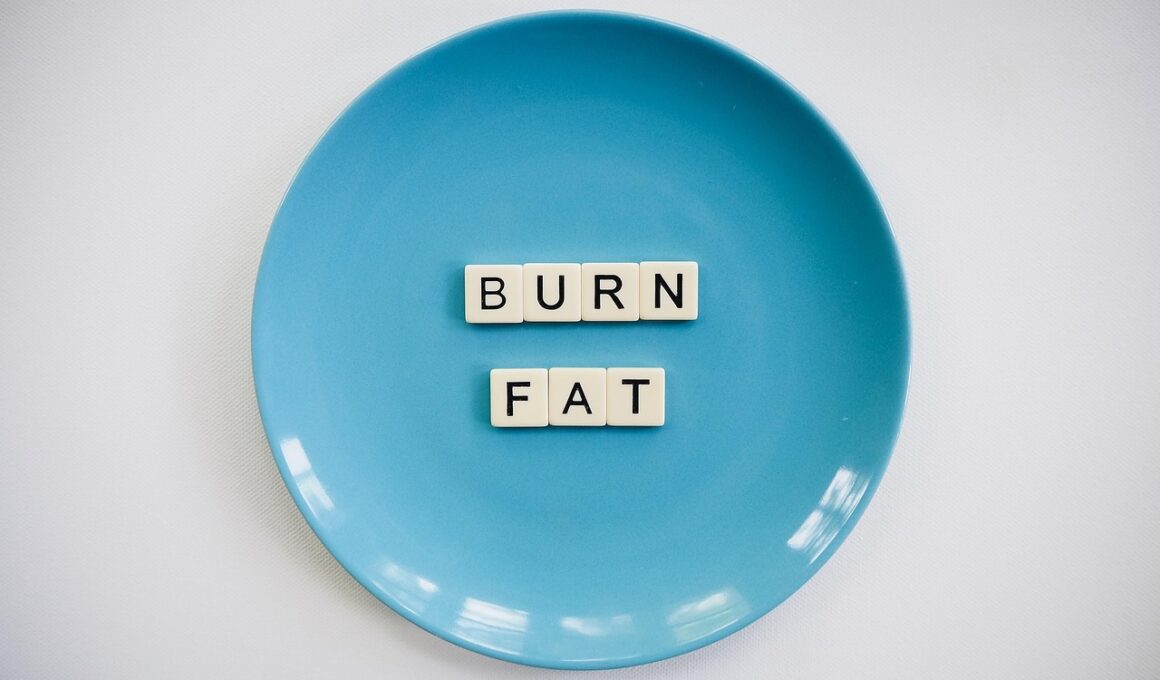HIIT vs. Steady-State Cardio: Which Burns More Fat?
When it comes to fat loss, two popular methods often come into debate: High-Intensity Interval Training (HIIT) and steady-state cardio. Many individuals are curious about which approach is more effective for burning fat. HIIT involves short bursts of intense activity followed by rest periods, while steady-state cardio involves maintaining a consistent, moderate effort over time. Studies have shown that both methods can be effective for weight loss. However, the choice may depend on one’s personal preferences, fitness level, and available time. Participation in HIIT can lead to significant calorie burning in a shorter duration. This makes it appealing for those with limited schedules. Additionally, HIIT can promote an afterburn effect, where the body continues to burn calories post-workout. On the other hand, steady-state cardio, such as jogging or cycling, may be more manageable for beginners and those looking for lower injury risk. In conclusion, understanding the differences between both methods assists in making an informed decision on the best approach for your weight loss journey.
The Science Behind HIIT
High-Intensity Interval Training (HIIT) is recognized for its efficiency in promoting fat loss. It’s ideal for those who seek quick workouts without compromising effectiveness. During HIIT sessions, your heart rate reaches 80% or more of its maximum capacity, ensuring maximum calorie burn. This intense effort engages both aerobic and anaerobic energy systems, leading to improved cardiovascular fitness while burning fat. Furthermore, HIIT can lead to an increased metabolism long after the session ends due to excess post-exercise oxygen consumption (EPOC). In practical terms, this means you’re continuing to burn calories at an elevated rate even while resting. Additionally, many people find HIIT more enjoyable, as it provides variety and challenge. However, despite its numerous benefits, HIIT may not be suitable for everyone. If you’re a beginner or have existing health concerns, starting with moderate intensity or consulting a professional can help enhance safety and effectiveness. Balancing the intensity with your personal fitness level is vital. Integrating HIIT workouts into your regimen can vastly improve fat loss outcomes when executed correctly.
Steady-state cardio holds its own merits when it comes to fat burning and overall endurance. This form involves maintaining a consistent, moderate pace throughout the workout, which can often be less taxing on the body compared to HIIT. Examples include activities such as walking, jogging, or biking at a steady speed. One key advantage of steady-state cardio is its accessibility; individuals of all fitness levels can participate without feeling overwhelmed. In addition, steady-state cardio is often easier to maintain over extended periods, allowing for longer fat-burning sessions. This aerobic exercise can promote fat oxidation, utilizing fat as the primary fuel source during workouts. This makes steady-state effective for those focused on endurance or weight management alongside fat loss. Moreover, this method offers a lower injury risk compared to the often intense nature of HIIT, making it a suitable choice for older adults or those with previous injuries. Ultimately, selecting the right approach for your goals may revolve around personal enjoyment and adherence, allowing long-term success in your fat loss efforts.
Comparing Caloric Burn
Many individuals seek definitive answers regarding caloric burn from HIIT and steady-state cardio for fat loss. In general, HIIT tends to burn more calories per minute compared to steady-state cardio. For instance, a 30-minute HIIT session could burn upwards of 300 calories or more, depending on the individual’s weight and effort level. Conversely, a similar duration of moderate steady-state cardio might yield around 200 calories. However, it’s essential to consider workout duration, intensity, and individual fitness levels, as these factors can heavily influence results. Furthermore, the greater caloric burn during HIIT doesn’t necessarily guarantee more fat loss. The post-exercise calorie burn from HIIT (EPOC) can enhance total calorie expenditure throughout the day. However, longer, more moderate workouts may culminate in burning additional total calories, overall aiding in fat reduction. As such, individuals may find it beneficial to vary their workouts, combining both methods to maximize fat-burning potential. Exploring possibilities tailored to personal preferences encourages sustained commitment when pursuing fitness goals.
A pivotal aspect of fat loss success is the individual’s nutrition. Regardless of workout choice, a healthy diet is crucial to support and enhance fat-burning efforts. Incorporating a balanced diet rich in whole foods—lean proteins, healthy fats, and complex carbohydrates—can provide the energy required for effective workouts. Understanding the synergy between exercise and nutrition can lead to better results. For example, someone engaging in HIIT should ensure adequate protein intake to facilitate muscle recovery and growth. This aids in enhancing metabolic functions, further supporting fat loss. Similarly, steady-state cardio practitioners benefit from proper fueling, as their longer workouts demand energy from nutritious food sources. Meal timing and content can notably affect workout performance and recovery. Individuals should consider tailoring their nutrition plan to fit their preferred exercise method while focusing on adequate hydration to optimize overall health. There may also be merit in seeking professional advice from a registered dietitian; they can assist in developing an appropriate plan suited to unique needs, habits, and goals for fat management. Nutrition can significantly amplify efforts toward effective weight loss.
The Importance of Consistency
No matter the method chosen for fat loss, consistency ranks among the most critical factors. Engage in HIIT or steady-state cardio but aim to commit to a regular workout schedule. This not only enhances physical capabilities but fosters lasting changes in metabolic function. Establishing a set routine can aid in habit formation, making workouts feel less daunting over time. For instance, designate specific days and times for each workout session to instill a sense of obligation and intention. Vary your sessions between HIIT and steady-state workouts to stave off boredom while also enjoying their unique benefits. This mixture can lead to consistent activity levels over time. Furthermore, assessing personal progress and performance can help maintain motivation. Setting realistic goals and tracking progress can affirm your efforts and accomplishments. Whether achieving distance milestones or overcoming personal bests in lifting, each victory reinforces commitment. Staying connected to your objectives can lead to sustainable weight loss and maintenance. Ultimately, remember that building a healthier lifestyle isn’t solely about rapid results; rather, it’s the long-term dedication that offers substantial rewards.
In conclusion, both HIIT and steady-state cardio possess unique benefits for fat loss, each serving different preferences and fitness levels. It’s essential to assess your individual goals, current fitness state, and lifestyle when making a decision. If you’re short on time and crave high-intensity workouts, HIIT may be better suited for you. Alternatively, if you prefer a more relaxed workout setting or are new to exercise, steady-state cardio offers excellent benefits without the intensity. Combining both strategies can create a comprehensive fitness plan that maximizes fat-burning potential while keeping exercise engaging. Ultimately, the key is to find a routine that you enjoy and can stick to. Consistency coupled with proper nutrition will ensure effective results in your weight loss journey. Mental attitude plays a role too; approaching exercise with a positive outlook can keep motivation high. Remember, every individual is unique, and efforts should be tailored accordingly. With dedication and informed choices, anyone can achieve their fat loss goals effectively, ensuring a healthier, more active lifestyle.


